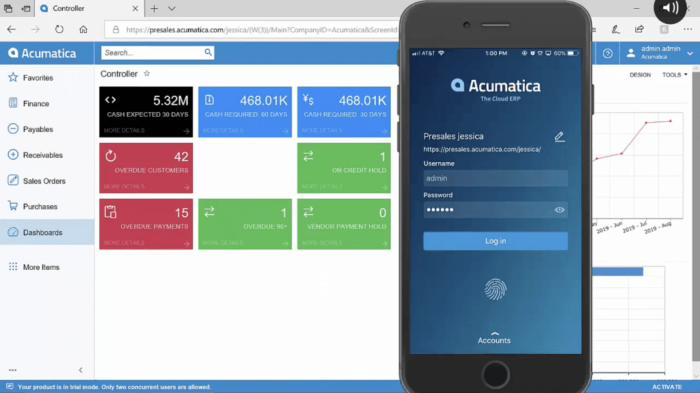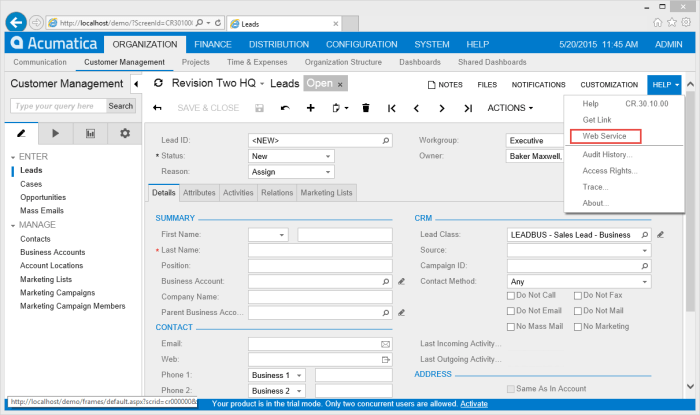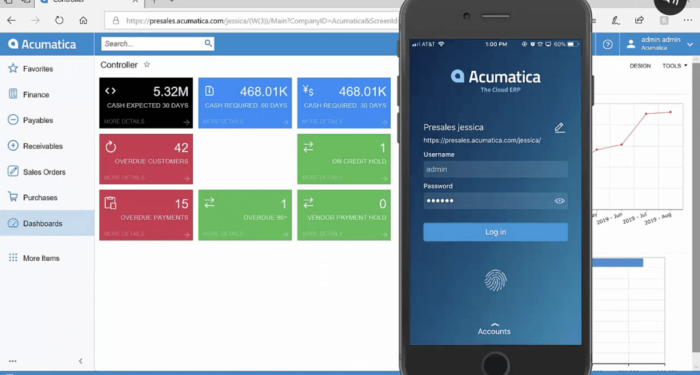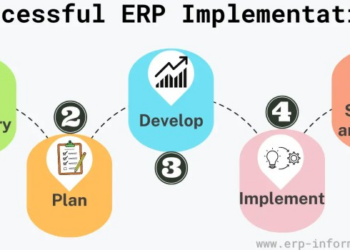Embark on a journey into the world of Acumatic, a dynamic software solution revolutionizing how businesses operate and thrive in today's competitive landscape. From enhancing financial processes to optimizing inventory management, Acumatic offers a robust set of features that drive efficiency and success.
Let's delve deeper into the realm of Acumatic and uncover the transformative impact it can have on organizations of all sizes.
As we unravel the layers of Acumatic's functionality and implementation strategies, a clearer picture emerges of the software's role in reshaping business operations for the better.
Overview of Acumatic
Acumatic is a cloud-based ERP (Enterprise Resource Planning) software designed to streamline and optimize various business operations. It offers a range of features that help organizations manage their finances, inventory, supply chain, and customer relationships more efficiently.
Key Features of Acumatic
- Financial Management: Acumatic provides tools for budgeting, forecasting, and financial reporting, helping businesses make informed decisions.
- Inventory Management: With Acumatic, organizations can track inventory levels, manage orders, and optimize supply chain processes.
- Customer Relationship Management (CRM): Acumatic offers CRM functionalities to manage customer interactions, sales pipelines, and marketing campaigns.
- Business Intelligence: The software includes analytics and reporting tools to help businesses gain insights and make data-driven decisions.
Industries and Significance of Acumatic
Acumatic is commonly used in industries such as manufacturing, distribution, retail, and professional services due to its comprehensive features and scalability. In manufacturing, Acumatic helps streamline production processes and manage resources effectively. In distribution, it optimizes inventory management and order fulfillment.
Retail businesses benefit from Acumatic's CRM capabilities to enhance customer relationships, while professional services firms use it to track projects, time, and expenses efficiently.
Acumatic Functionality

Acumatic offers a range of core functionalities that streamline financial processes, aid in inventory management, and ensure seamless integration with other systems for efficient data flow.
Managing Financial Processes
- Acumatic allows for real-time tracking of financial transactions, including accounts payable and accounts receivable.
- The system automates processes such as invoicing, billing, and financial reporting, reducing manual errors and increasing efficiency.
- Acumatic provides tools for budgeting, forecasting, and financial analysis, helping organizations make informed decisions.
Inventory Management and Tracking
- Acumatic enables businesses to track inventory levels, monitor stock movements, and optimize reorder points for efficient supply chain management.
- The system offers insights into product performance, demand forecasting, and inventory valuation, helping businesses make data-driven decisions.
- Acumatic integrates with barcode scanning and RFID technologies for accurate inventory tracking and management.
Integration with Other Systems
- Acumatic seamlessly integrates with CRM systems, e-commerce platforms, and other third-party applications to ensure consistent data flow across different departments.
- The system supports APIs and web services for easy integration with legacy systems, enabling organizations to leverage existing technology investments.
- Acumatic's integration capabilities streamline processes such as order processing, customer management, and financial reporting, improving overall operational efficiency.
Implementation of Acumatic

Implementing Acumatic in an organization involves several key steps to ensure a successful transition and integration of the software. It is essential to follow best practices and address common challenges that may arise during the implementation process.
Steps for Implementing Acumatic
- Planning and Preparation: Before implementing Acumatic, it is crucial to have a well-defined plan in place. This includes setting clear objectives, establishing a timeline, and identifying key stakeholders.
- Training and Education: Provide adequate training to employees who will be using Acumatic to ensure they are familiar with the software and its functionalities.
- Data Migration: Transfer existing data from legacy systems to Acumatic in a seamless manner to prevent any loss of important information.
- Customization and Configuration: Tailor Acumatic to meet the specific needs of your organization by customizing settings and configurations accordingly.
- Testing and Quality Assurance: Conduct thorough testing to identify any issues or bugs before fully implementing Acumatic across the organization.
- Go-Live and Support: Roll out Acumatic to all users and provide ongoing support to address any questions or concerns that may arise during the transition.
Best Practices for Successful Acumatic Implementation
- Engage Key Stakeholders: Involve key stakeholders throughout the implementation process to ensure alignment with organizational goals and objectives.
- Communicate Effectively: Maintain open communication with employees to keep them informed about the implementation progress and address any concerns proactively.
- Follow a Phased Approach: Implement Acumatic in stages to manage risks and ensure a smooth transition without overwhelming users.
- Set Realistic Expectations: Manage expectations by setting realistic timelines and goals for the implementation process to avoid disappointment or frustration.
- Provide Ongoing Training: Offer continued training and support to users even after the initial implementation to maximize adoption and utilization of Acumatic.
Common Challenges and How to Overcome Them
- Resistance to Change: Address resistance by communicating the benefits of Acumatic, providing training, and involving employees in the implementation process.
- Data Integration Issues: Ensure proper data mapping and validation to prevent data integration issues during the migration process.
- Lack of Executive Support: Secure executive buy-in and support to overcome any roadblocks or challenges that may arise during the implementation.
- Insufficient Training: Address training gaps by providing additional resources and support to employees who may struggle with adapting to Acumatic.
- Scope Creep: Manage scope creep by defining clear boundaries and objectives for the implementation and avoiding unnecessary changes or additions.
Customization and Configuration
Customizing Acumatic to fit the specific needs of an organization is a crucial step in maximizing its efficiency and effectiveness. By configuring Acumatic to streamline workflows, businesses can ensure smooth operations and improved productivity.
Customizable Features
- Acumatic allows users to customize dashboards and reports to display relevant data for different departments or roles within the organization.
- Users can create custom fields to capture specific information unique to their business processes.
- Workflow automation can be configured to eliminate manual tasks and ensure consistent processes across the organization.
Configuration for Workflow Optimization
- Acumatic can be configured to integrate with other systems, such as CRM or inventory management software, to streamline data sharing and improve overall visibility.
- Customized alerts and notifications can be set up to keep users informed of important updates or pending actions.
- Role-based security settings can be configured to restrict access to sensitive data and ensure compliance with regulatory requirements.
Importance of Regular Updates
Regular updates and configurations are essential for maintaining optimal performance and security of the Acumatic system. By staying up to date with the latest features and enhancements, organizations can leverage new functionalities to drive business growth and efficiency.
Final Summary

In conclusion, Acumatic stands as a pivotal tool for modern businesses seeking to streamline their operations and drive growth. With its customizable features, seamless integrations, and proven implementation practices, Acumatic paves the way for enhanced efficiency and success. Embrace the power of Acumatic and propel your organization towards a future of innovation and prosperity.
General Inquiries
What industries benefit most from using Acumatic?
Acumatic is commonly used in industries such as manufacturing, distribution, and services where complex financial processes and inventory management are crucial for operations.
How can organizations ensure a successful implementation of Acumatic?
Organizations can ensure successful implementation by conducting thorough training sessions, appointing dedicated project managers, and closely aligning the software with their specific business needs.
Why is regular customization and configuration important for Acumatic?
Regular customization and configuration ensure that Acumatic continues to meet the evolving needs of an organization, streamlining workflows and maximizing efficiency.












